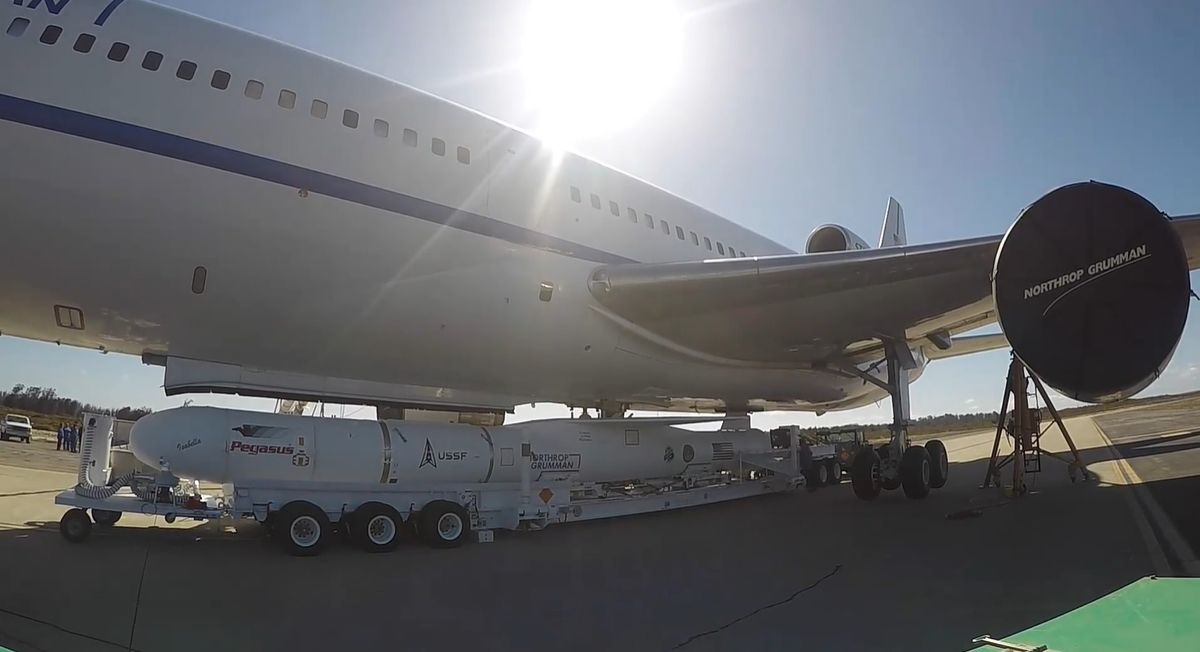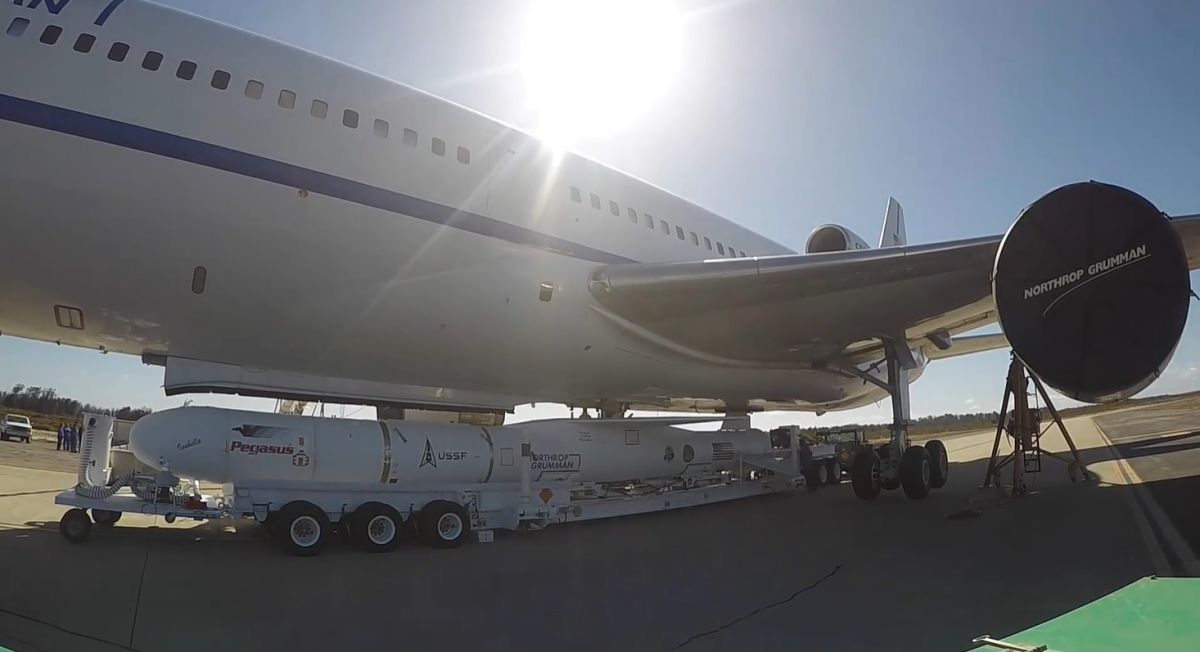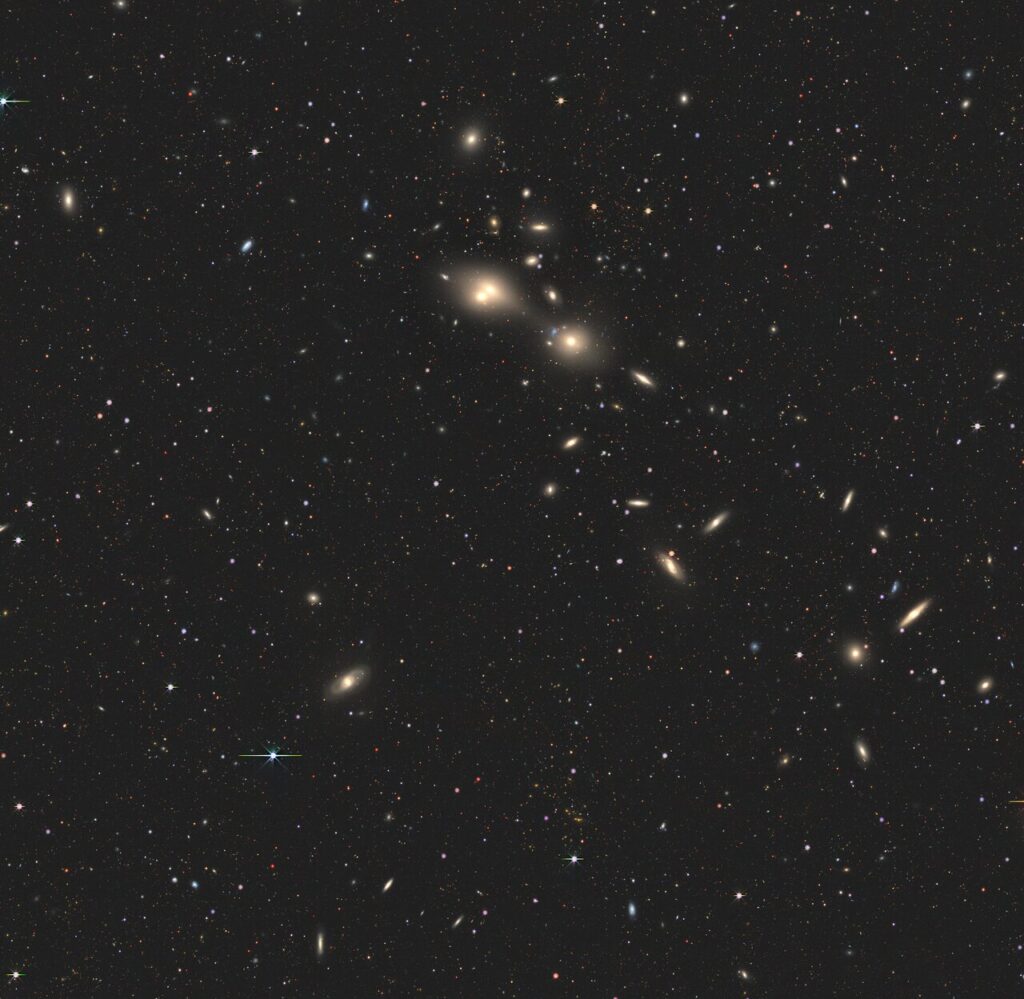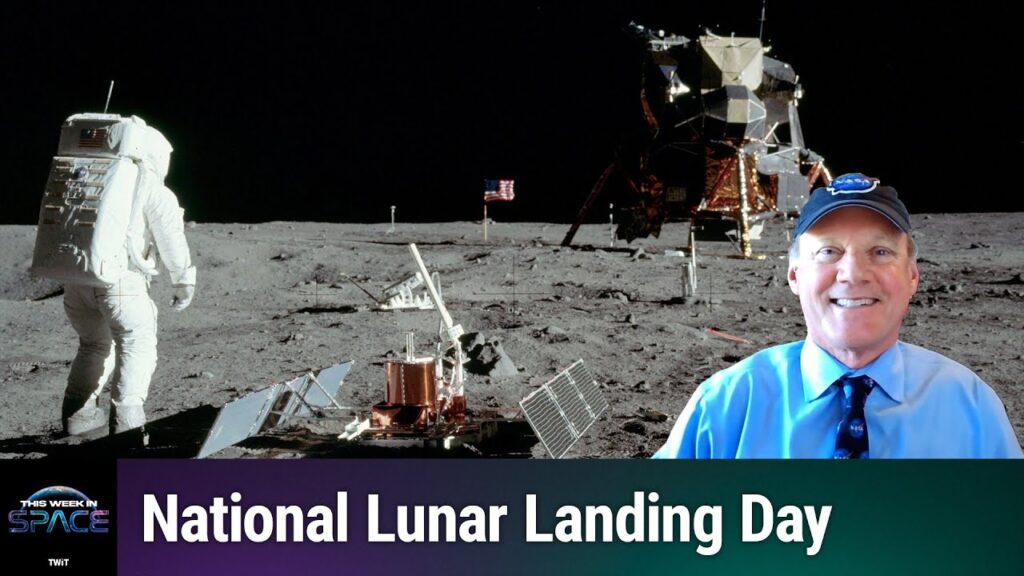
A Northrop Grumman rocket successfully launched a secretive Space Force satellite for “space domain awareness” — or detecting artificial objects in orbit — on Sunday (June 13) in a rapid response mission for the U.S. military.
A Northrop Grumman L-1011 carrier aircraft took off from the newly renamed Vandenberg Space Force Base and flew out over the Pacific Ocean, where it launched the a solid fuel Pegasus XL rocket carrying the new satellite at 4:11 a.m. EDT (1:11 a.m. PDT/0811 GMT). Vandenberg officials confirmed the success of the launch in a Facebook statement.
The mission is called Tactically Responsive Launch-2 (TacRL-2) and is part of a program acknowledged by Air Force from at least 2019. In its biennial report of that year, Air Force stated its rocket systems launch program is “developing a tactically responsive launch capability” through awarding Pegasus XL rocket launches to Northrop Grumman.
“Team V successfully launched the Tactically Responsive Launch-2 mission. A demonstration of a speed, agility, and flexibility in space launch,” Vandenberg officials wrote in a statement. “Showing that space assets can be placed in orbit faster than standards timelines, this launch showcases the talent, dedication, and flexibility of Team V.” The Space Force and Northrop Grumman did not provide a live webcast of the launch.
Related: Atlas V launches SBIRS Geo-5 missile warning satellite for Space Force
As of 2019, program requirements state Northrop Grumman must have “launch vehicle readiness” in four months and then put the launch vehicle on standby “with a 21-day call-up to launch capability,” Air Force added in the biennial report.
TacRL-2 and other launches of its type are part of Space Force’s push to offer more flexible small launch services, called “responsive launch.” The mission was built by Space Safari, a new military entity that “responds to high-priority, urgent space needs” through a rapid acquisition and execution process, according to Space Force.
“Space Safari’s initial mission is to plan, acquire and deliver a specialized space capability with the ability to integrate and launch within just weeks of a ‘Go!’ order,” Col. Dennis Bythewood, director of special programs, said in a Space Force release on Thursday (June 10) announcing the establishment of a Space Safari program office.
“Where most space vehicles take years to deliver, and launches are similarly planned years in advance, this ability to quickly integrate and launch will result in greatly enhanced capabilities,” Bythewood added.
Space Safari was modeled after a rapid-response Air Force group nicknamed “Big Safari”, and more properly known as the 645th Aeronautical Systems Group. Big Safari was founded in 1952 to centralize the Air Force’s covert surveillance during the Cold War, according to the U.S. Air Force.
Gen. John Raymond, Space Force’s chief of space operations, spoke about Space Safari’s mandate during a Council on Foreign Relations webcast event Thursday (June 10), SpaceNews reported.
“A year ago I challenged our acquisition organization to develop a capability in tactical timelines, integrate it onto a launch vehicle and launch it, and let’s see how fast we can do it,” Raymond said, adding, “In less than a year they took satellite components off the shelf, married them up with a satellite bus that was off the shelf, and put them together in a space domain awareness satellite.”
Northrop Grumman received the launch contract under a nearly $1 billion, nine-year procurement program from 2019 known as Orbital Services Program-4, SpaceNews added. The procurement allows for task orders for specific requirements; federal contracting information shows that the Space Force’s Space and Missile Systems Center awarded Northrop Grumman the TacRL-2 task order in July 2020, according to SpaceFlightNow.
In February, Space Force released a new procurement request for successor Tactically Responsive Launch proposals, including TacRL-3 in April 2022 and TacRL-4 in February 2023. Space Force also alluded to the procurement in its Thursday press release.
Follow Elizabeth Howell on Twitter @howellspace. Follow us on Twitter @Spacedotcom and on Facebook.



